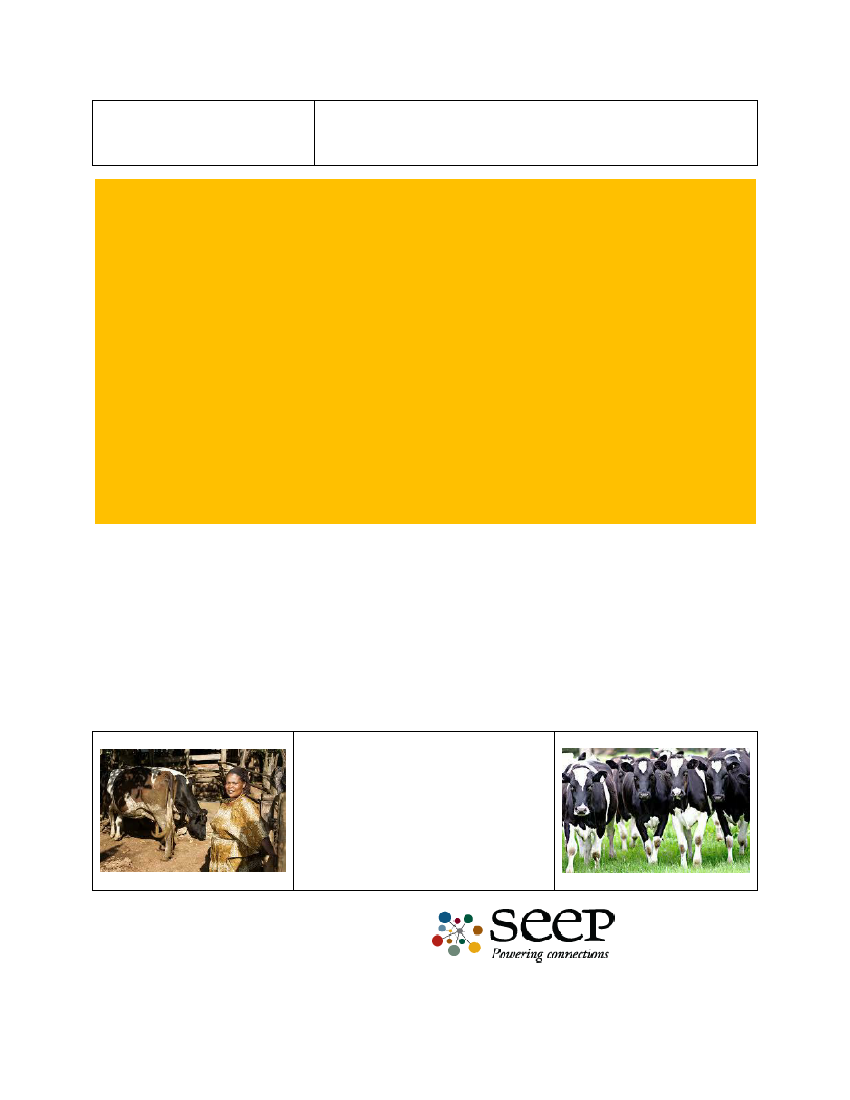
Best practice in facilitation
“There are a lot of mistakes in the processing plants but no one knew what
should be done or even how to carry out quality inspection. What we have been
exposed to here (is) not covered in the local Universities. It was a world class
session.”Mr. Mburu, KDB Regulatory Inspector (Nairobi Region) commenting on
a program workshop to review industry standards for a range of milk products.
The program adopted best practices in business development service facilitation including:
Identifying lead suppliers or service providers from existing market assessments and similar initiatives,
implementing calls and expressions of interest to select pilot service providers and involving them in planning
and implementation.
Clearly demonstrating to potential partners the benefits of involvement and engaging them to buy into a
broad vision of market change.
Demonstrate the business case, benefits and vision to other market players via press conferences, study trips
and seminars.
Stimulating and capacitating those service providers to improve market performance, drive market change
and respond to shifts in the market such as market demand, competition and changing technology.
Sharing information publicly about market gaps and opportunities in workshops and the media.
Offering technical capacity building to take advantage of opportunities.
Cost-sharing the development of exploring new ways of doing business.
Facilitating support for the initiatives of service providers in the market.
Facilitating business linkages and partnerships.
Facilitating technical advice and assistance.
Mentoring partners to develop and test viable business models, strategies and approaches.
Identifying the overlap of the profit incentive and the development objectives.
Facilitators design interventions with the greatest potential for impact when they have a view of the entire market
system. The facilitator views the support market from an external and objective position, while the provider is an
integral part of the system. With information gathered from support markets and value chain, the facilitator can
promote alternatives inputs and services that have widespread applicability and significant impact. The facilitator
must visualize from the program‘s start how to develop a whole dairy market system and plan for a viable and
independent market structure. The facilitator should have a systems view point with the goal of benefitting as many
small enterprises as possible. This includes visualizing the functions of a sustainable market and the various types of
players, who do or might, perform those functions. During market assessment a facilitator must tailor information
gathering to help understand what the market looks like now and envision how it could change to offer more benefits
to small enterprises. The facilitator should concentrate on designing interventions that result in vibrant, autonomous,
and commercial support markets that continue to exist after the donor has exited.
The Regional Working Groups have helped a great
deal to disseminate information and even up
farm gate prices to some extent according to Mr.
Maina, Secretary, New Nginda Dairy farmers self
Help Group. According to him, the RWG forums,
where all stakeholders in the region meet, put
their challenges on the table and chart
out/propose solutions have helped a great deal in
making sure that information reaches the people.
“Even hawkers and milk bar operators now pay
higher prices” he says.
FOR MORE INFORMATION VISIT:
47